"Why does my child hate bath time. We do it nearly every day and it's still such a battle!"
I have this conversation with a lot of parents I work with. If you're here, chances are you've said that to yourself at one time or another.
No two kids are the same, and no one solution is going to work for everyone but hopefully I can offer a little bit of understanding into your kids worlds, and some ideas to help make bath time a bit more manageable!
So why do people hate bath time?
Maybe they don't enjoy the sensations
Getting in the bath involves a number of sensations that aren't typical to the rest of our day.
- You have to get undressed; clothing naturally provides some pressure on our body. If someone finds this pressure calming and regulating, then removing clothes can make them feel uncomfortable
- There's lots of temperature changes; from getting undressed in the (usually cool) bathroom, to then getting in the warm bath, the changes of temperature can be uncomfortable for a lot of kids
- Bathrooms are usually loud and echoey
- Water getting in eyes, ears or on the face can be uncomfortable
- The smell of soap or shampoo can sometimes be too much!

We know that neurodivergent kiddos experience sensations differently than neurotypical kids (Little et al., 2017). Given that there are a lot of sensory experiences around bath time, it makes sense that it might be more of a challenge for them.
Maybe the routine isn't predictable enough for them
Brains love routine and love predictability. Knowing what to expect and what comes next is generally pretty nice and regulating for people.
As adults we have the benefit of experience to help us understand what to expect. We know what bath time consists of, we know the steps, we know the sensations, and we know when to expect it!
As an adult, I know that I need to get an early night so I'm going to have a shower before dinner instead of before bed. I know my hair is getting greasy so this shower is going to be a hair wash shower, not a quick shower.
Kids don't have that benefit and so, often they feel uncertain about what to actually expect. So they avoid it.
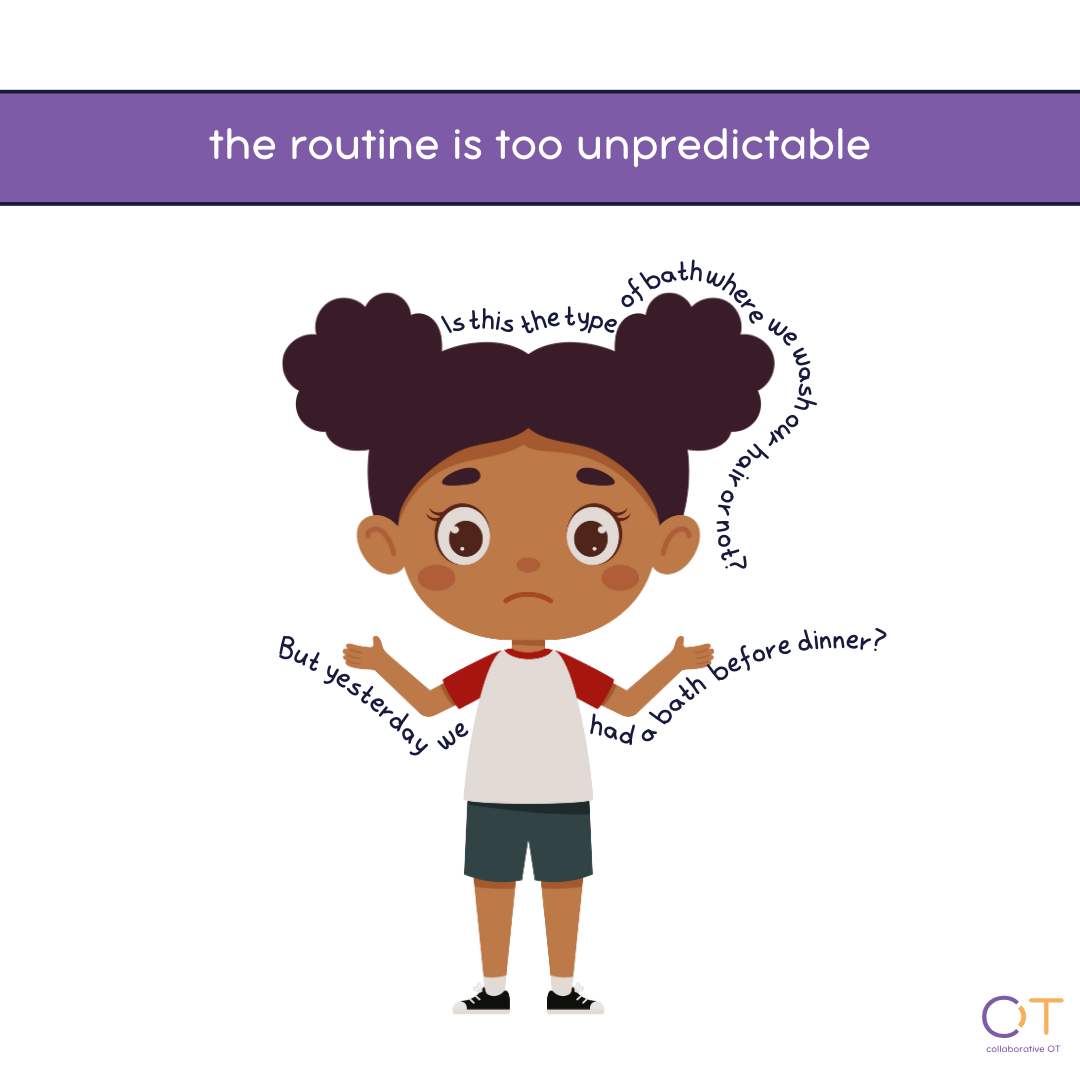
Maybe they don't want to stop what they're doing
No one likes stopping something fun for something boring.
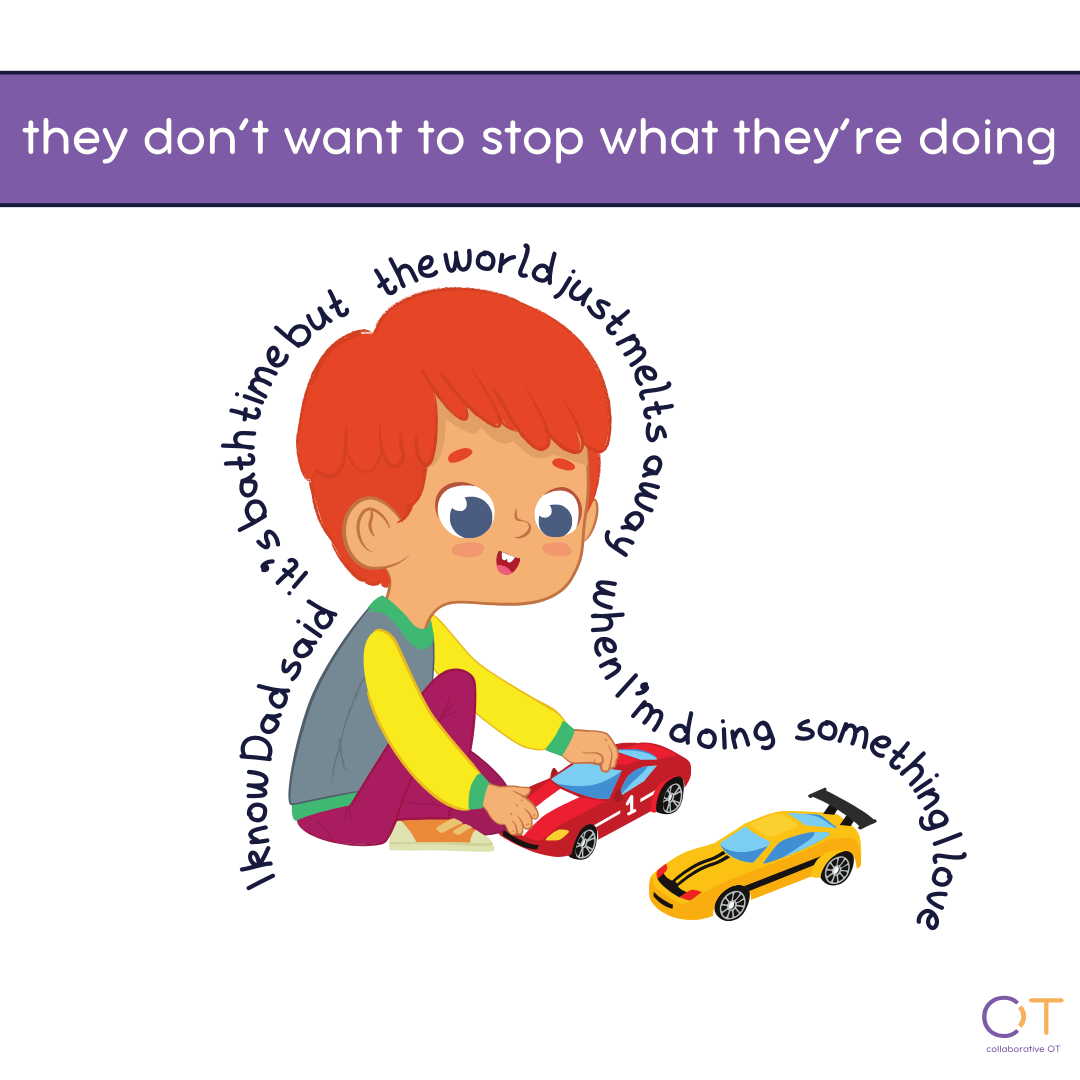
Again, as adults we have the benefit of experience. We know that we can't sit down and watch TV or play video games all night and at some point, we'll have to get up and take care of our lives. We've developed skills to stop doing the things we love, to do the things we need to do.
Kids haven't learned that yet.
So when we ask them to get ready or a bath when they're doing the thing they most love in the world and they just don't, they probably don't have the skills. Yet.
So then how do we help our kids and make bath time a little easier?
Well, we can find ways to make the sensations more manageable.
This could look like:
- using ear plugs or ear putty to stop water getting in ears
- using goggles to stop water getting in eyes
- placing towels or bathmats around the bathroom to reduce echos
- adjusting the water temperature to match your child's preference
- finding a safe way to make the bathroom warmer so there isn't too much of a temperature shock (I love heat lamps)
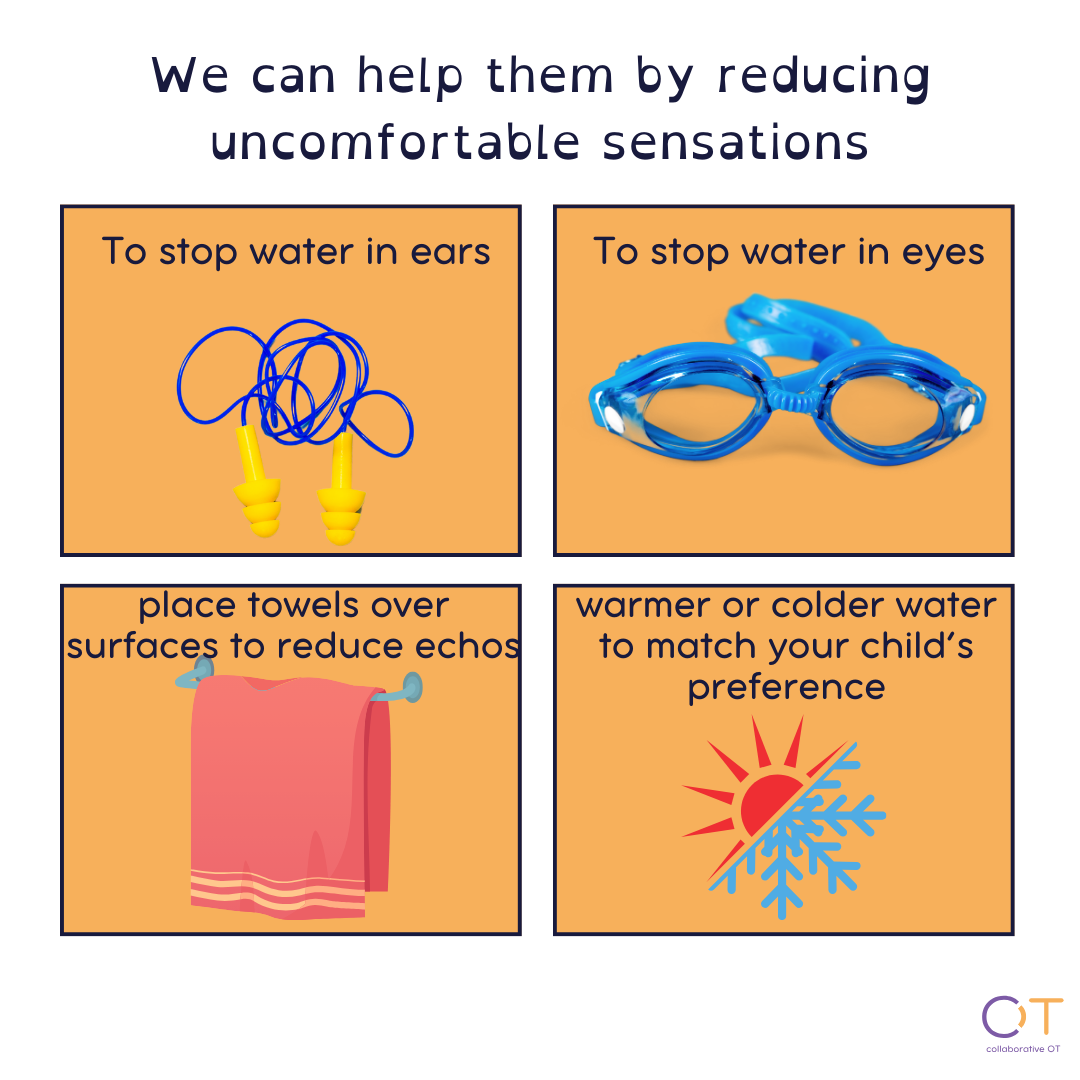
Or find ways to make things more predictable
Remember how we said that not knowing the routine or expectations can make people uncomfortable. Well the simple way to fix that is by making bath time predictability.
This can be as simple as having a routine that you follow. Maybe it's dinner, bath, bed.
If a regular routine isn't manageable for your household, you can always set a routine for the day/afternoon/evening. Have a conversation, or use a visual schedule to tell your kids: "Yesterday the plan was different, today this is the plan."
Or by setting expectations for the bath. Let your child know what's going to happen in the bath, how long it's going to be, and what's going to happen next.
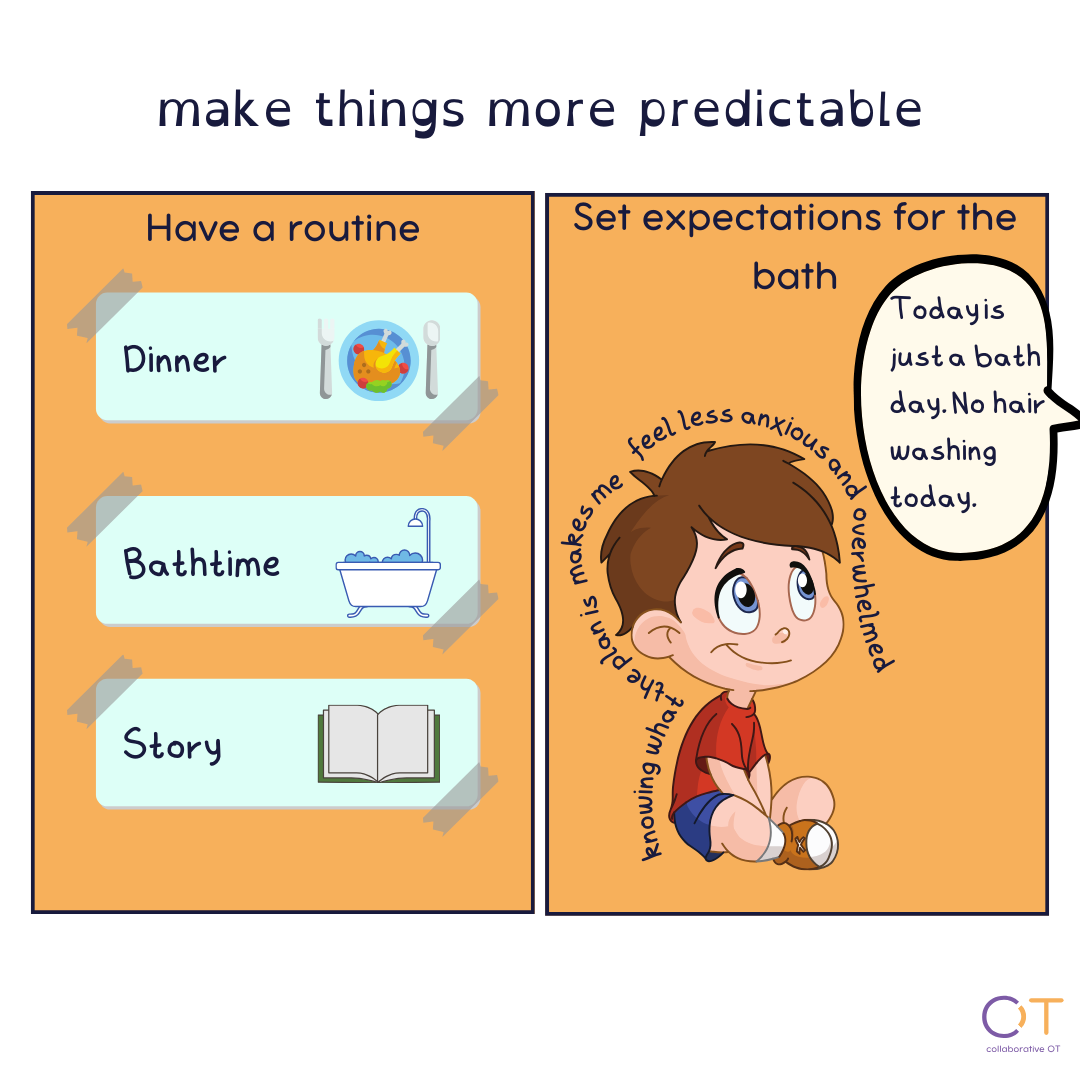
You can also help by giving your kid some control
This links in to the having a routine and setting expectations.
If a person feels like they have control and agency and buy in to a situation, they're going to engage better.
Hygiene is a non-negotiable. So a child really doesn't have control over whether or not they have a bath. That's your job as the parent. But we can give them control over little things:
- let them pick the towel they want to use to dry off
- if it's manageable for your family, they could pick the time they have a bath
- they could pick how long they're in the bath for. Do they want a bath for 10 minutes or 15?
- or even the scents. Do they want strawberry or plain bubble bath?
There are lots of little ways to give your child control over a situation that might make it easier for them to engage.
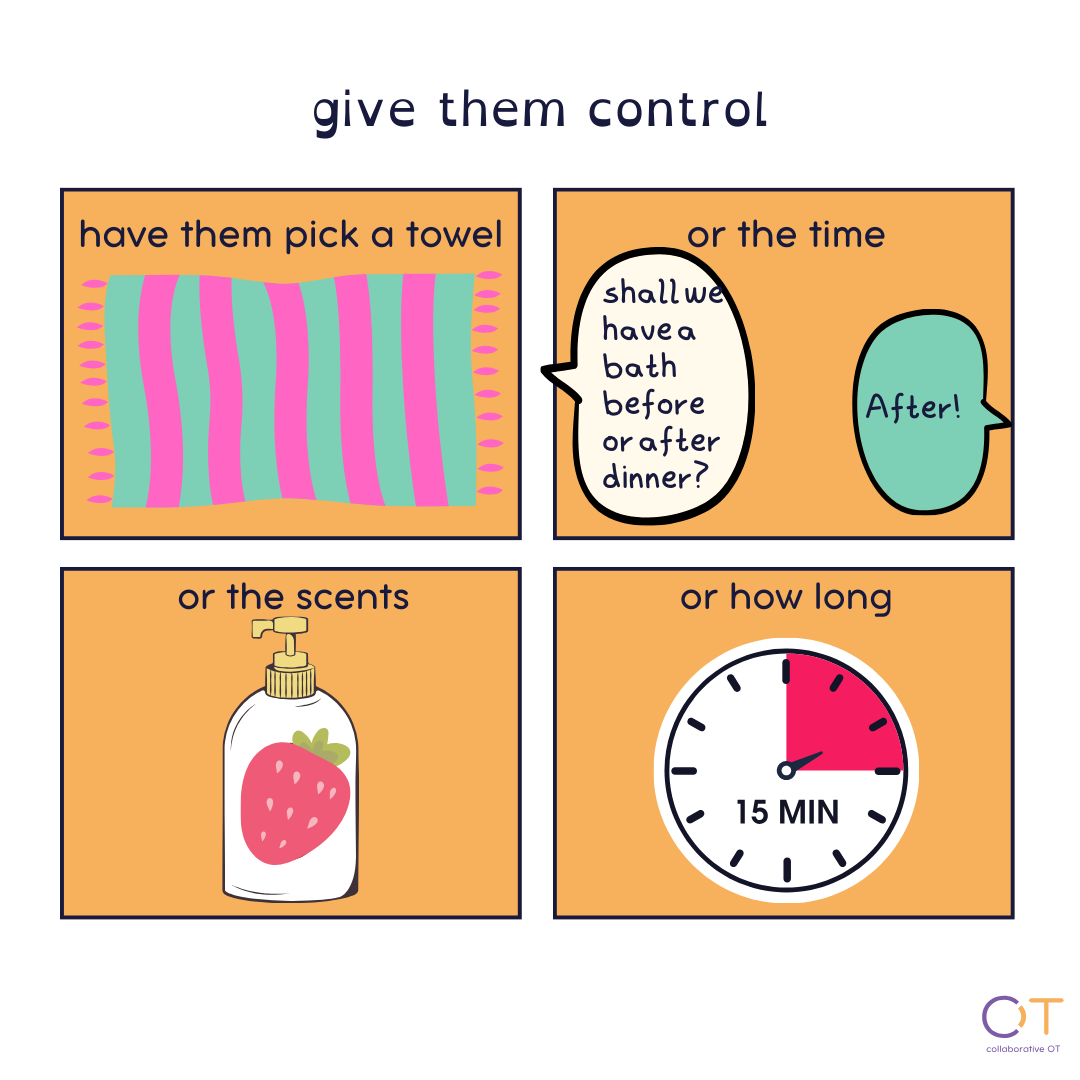
You can also help them transition into the bath
Moving from one thing to the next is challenging for lots of people, especially neurodivergent people. So we need to find ways to make that transition more manageable.
My favourite way is to link what they are doing with what you want them to do. So if your kid is having a blast playing with cars and its bath time, let's take the toys to the bath! Instead of changing multiple things (what they're doing, where they're doing it), you've just changed one (where they're doing it) which is a lot easier for brains to deal with.
You can also use a timer to help them get ready to change tasks. I would use a visual timer instead of an arbitrary '5 minutes till bath time' because kids haven't really developed a sense of time yet. A visual timer is something concrete and visible they can use to see exactly how long they've got left
You can also make the transition fun! Race to the bathroom, dance there like monkeys, crawl like a wombat. Fun and play is one of the best tools you have at your disposal!
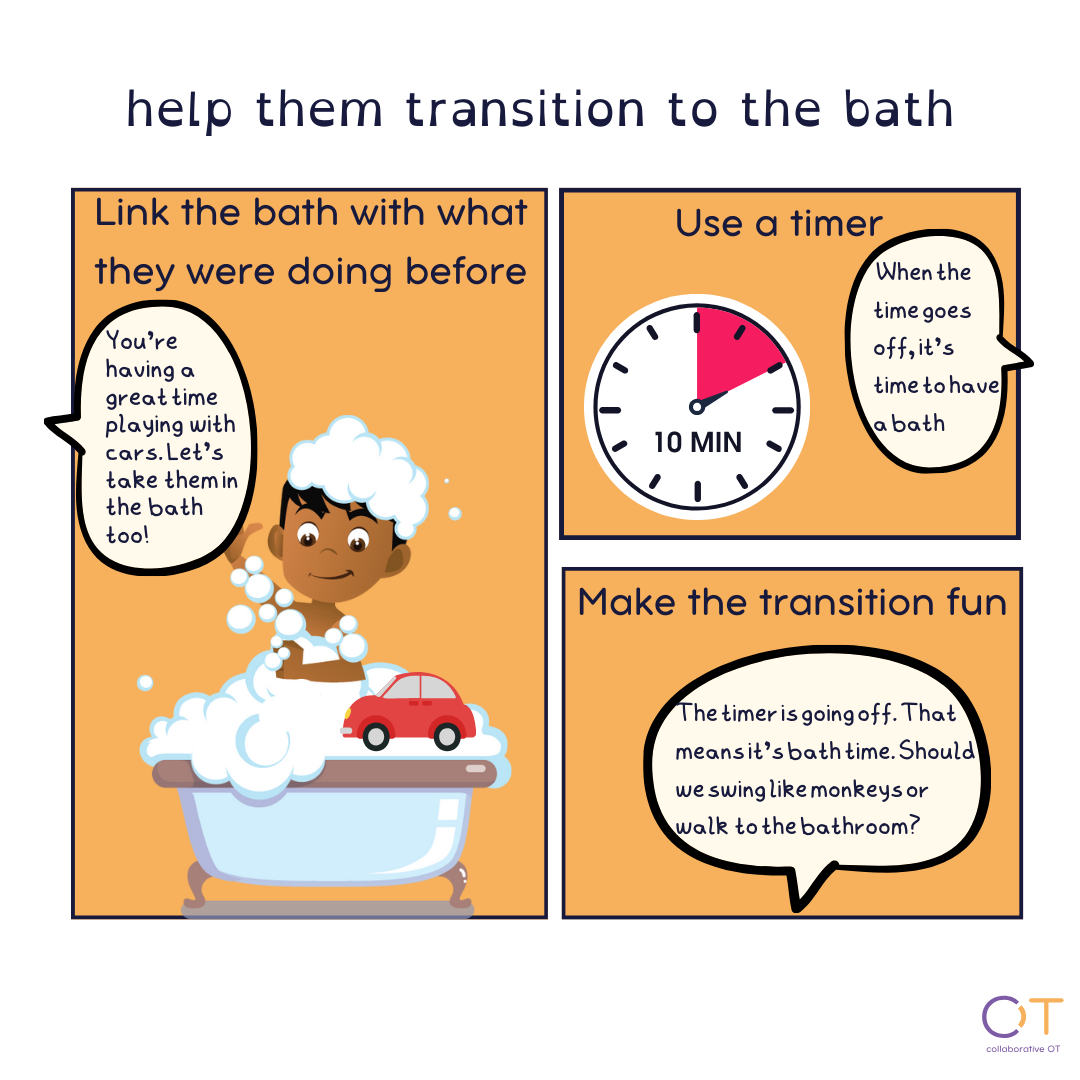
So in summary
Kids might have difficulty with bath time because:
- the sensations surrounding the bath are difficult
- the routine isn't predictable and they feel out of control
- they don't want to stop what they're doing
You can help them by:
- change up the sensations surrounding the bathroom and bath time
- make things more predictable and set their expectations
- help them transition to the bath
- give them control
References
Little, L. M., Dean, E., Tomchek, S., & Dunn, W. (2017). Sensory processing patterns in autism, attention deficit hyperactivity disorder, and typical development. Physical and Occupational Therapy in Paediatrics, 243-254.